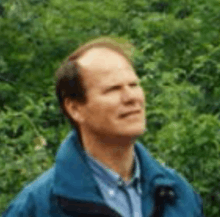Charles Richard Taylor
| Charles Richard Taylor | |
|---|---|
 Taylor in Ascona, Switzerland in 1995 | |
| Born |
Ernst Walter Mayr September 8, 1939 Tempe, Arizona |
| Died | September 10, 1995 (aged 56) |
| Residence | United States |
| Nationality | American |
| Alma mater |
Occidental College Harvard University |
| Scientific career | |
| Fields | Physiology, Comparative physiology |
Charles Richard Taylor (8 September, 1939–10 September, 1995) was an American biologist whose career focused on animal physiology. After conducting work in east Africa, Taylor became the Charles P. Lyman professor of biology at Harvard University and was named first director the University's Concord Field Station. Taylor was elected to the American National Academy of Sciences in 1985.[1]
Early life
Charles Richard Taylor was born in Tempe, Arizona in 1939 to Rosalind and Norman Taylor, a Methodist minister. Charles, who preferred his middle name Richard, was the third of four sons. In 1941 the family moved to Los Angeles, where Taylor attended public high schools and then was admitted to Occidental College.[2] Taylor completed his bachelor's degree in biology in 1960. Shortly thereafter he published his first paper in the journal Nature with biologist Jack W. Hudson, on blood uric acid buildup in flying birds.[2]
Taylor began his graduate studies at Harvard University in 1960, obtaining his masters in 1962 and PhD in 1963. His PhD topic, "The thermoregulatory function of the horns of Bovidae," was inspired by the observation that goat horns become hot when it is excited. Taylor concluded that horns were especially valuable as mechanisms of thermoregulation in very hot or very cold environments.[2]
Research in east Africa
In 1964 Taylor was named a research fellow at the Harvard Museum of Comparative Zoology, his work funded by the National Science Foundation. He traveled to Kenya and began working at the Muguga Veterinary Faculty physiological laboratories of the University of Nairobi, investigating whether and how antelopes might survive in desert regions without drinking water.[2] Taylor made a number of important discoveries, including the fact that certain bovids can remain active in very hot environments by increasing their body temperatures and radiative heat loss, while cooling their brains with novel blood circulation strategies.[2]
Taylor returned to the United States in 1968 and began work as a research fellow at Duke University. There, in collaboration with biologist Knut Schmidt-Nielsen, Taylor investigated the energetics of running at different speeds, with a special focus on size-scale relationships.[2]
Taylor continued his work in Kenya, among other topics studying large animal muscle energetics and gas exchange.[3]
Director of Harvard's Concord Field Station
In 1970 Taylor was invited back to Harvard to become first director of the University's new Concord, Massachusetts Field Station in Bedford, located in an erstwhile Nike missile range. He directed research at the site using both wild and domesticated animals for the next two-and-a-half decades.[2]
Taylor died of a heart attack in 1995.[2]
See also
References
- ↑ Weibel, Ewald (1996). "A tribute to Charles Richard Taylor. Charles P. Lyman professor of biology at Harvard University. 8 September 1939 to 10 September 1995" (PDF). Journal of Experimental Biology. 199: i–iv. Retrieved 21 May 2018.
- 1 2 3 4 5 6 7 8 Weibel, Ewald (2013). "C. Richard Taylor 1939–1995" (PDF). Biographical Memoirs. National Academy of Sciences: 1–20.
- ↑ Weibel, Ewald (2000). Symmorphosis: On Form and Function in Shaping Life. Cambridge, MA: Harvard University Press. ISBN 0674000684. Retrieved 21 May 2018.
Additional resources
- Bolis, L., K. Schmidt-Nielsen, and S. H. P. Maddrell (eds.). 1973. Comparative physiology. Amsterdam and London: North-Holland Publishing Company.
- Hoyt, D. F., and C. R. Taylor. 1981. Gait and the energetics of locomotion in horses. Nature 292:239–240.
- Sapoval, B., M. Filoche, and E. R. Weibel, 2002. Smaller is better—but not too small: A physical scale for the design of the mammalian pulmonary acinus. Proc. Natl. Acad. Sci. U. S. A. 99:10411–10416.
- Schmidt-Nielsen, K. 1964. Desert animals: Physiological problems of heat and water. Oxford, UK: Oxford University Press.
- Schmidt-Nielsen, K. 1998. The camel’s nose: Memoirs of a curious scientist. Washington, DC: Island Press.
- Weibel E. R., 1973. Morphological basis of alveolar-capillary gas exchange. Physiol. Rev. 53:419–495.
- Weibel E. R., C. R. Taylor, and L. Bolis. 1998. Principles of animal design: The optimization and symmorphosis debate. New York: Cambridge University Press.
- Weibel E. R., 2000. Symmorphosis: On form and function in shaping life. Cambridge, MA: Harvard University Press.